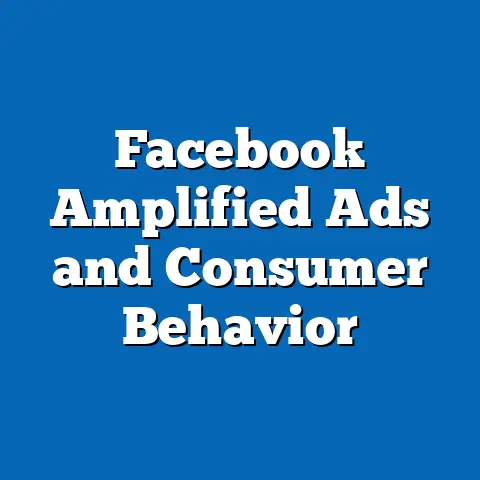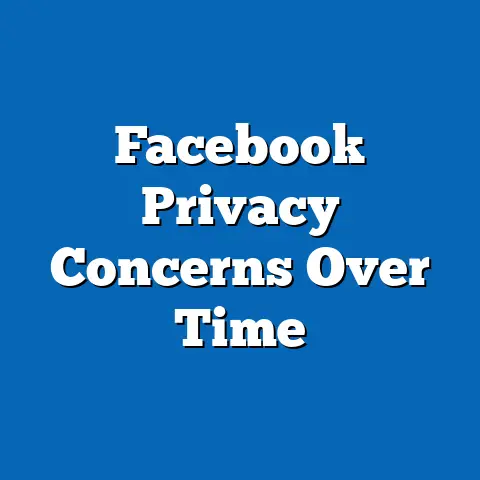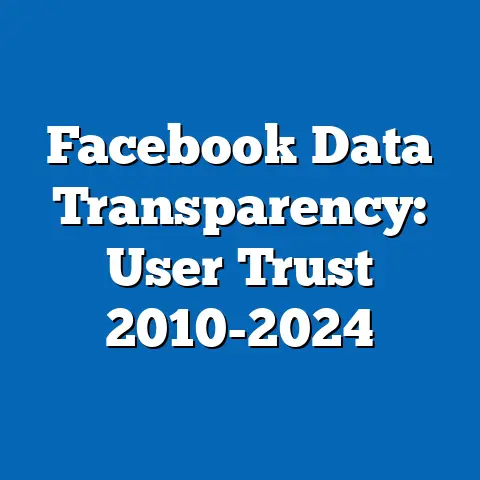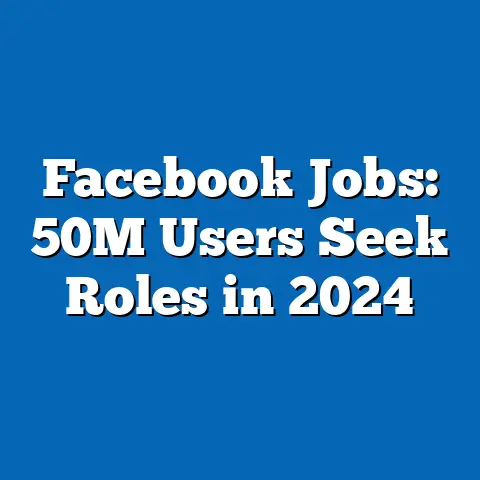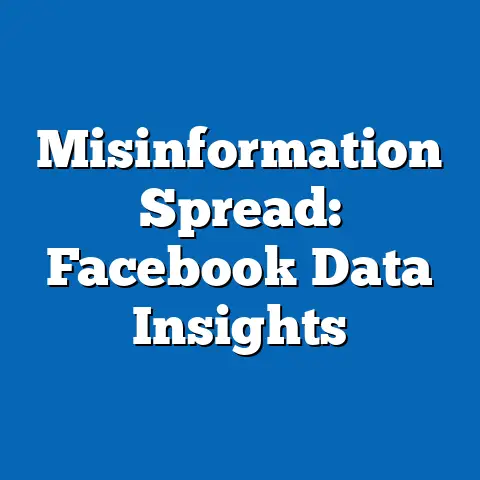Facebook Ad Algorithms: User Behavior Data
Facebook’s ad algorithms represent a sophisticated intersection of data analytics and user engagement, processing vast amounts of behavioral data to deliver targeted advertisements. At the core of these systems is “noise reduction,” a process that filters out irrelevant or inaccurate data to enhance targeting precision.
This concept is crucial because, without effective noise reduction, algorithms could be overwhelmed by extraneous signals, such as random clicks or bot-generated activity, leading to less effective ads and poorer user experiences.
In the context of generational studies, noise reduction influences how platforms like Facebook tailor content to diverse age cohorts, from Baby Boomers to Gen Z, reflecting broader demographic trends in digital interaction.
Generational dynamics add layers of complexity to this analysis, as each cohort brings unique behaviors shaped by historical events, technological adoption, and cultural shifts. For instance, older generations may view social media ads as intrusive, while younger ones engage more fluidly, influenced by their digital-native upbringing.
This article examines the key characteristics of noise reduction in Facebook’s algorithms, its historical evolution, and its societal implications, while weaving in generational perspectives.
By drawing on quantitative data from sources like Pew Research Center and Meta’s own reports, as well as qualitative insights from experts in media studies, we’ll explore how these algorithms impact user behavior across generations and what this means for society at large.
Section 1: Understanding Noise Reduction in Facebook Ad Algorithms
Noise reduction is a foundational element of machine learning algorithms used in digital advertising, including those on Facebook. It involves techniques like data cleansing, anomaly detection, and signal filtering to isolate meaningful user behavior patterns from irrelevant “noise,” such as accidental interactions or spam.
For example, if a user accidentally likes an ad, the algorithm must determine whether this is a genuine signal or mere noise to avoid misdirecting future content.
Key defining characteristics of noise reduction include its reliance on advanced AI models, such as neural networks, which analyze vast datasets in real-time to prioritize high-quality data.
Historically, noise reduction evolved from early digital advertising challenges in the late 1990s and early 2000s, when the internet was flooded with banner ads and irrelevant pop-ups. The dot-com bubble burst in 2001 highlighted the need for more efficient ad targeting, prompting companies like Google and later Facebook to invest in algorithmic refinements.
Facebook, founded in 2004, initially focused on basic user data like age and location but quickly advanced its systems as social media grew.
By the mid-2010s, with the Cambridge Analytica scandal in 2018 exposing data misuse, noise reduction became essential for compliance and ethical standards, helping to filter out manipulated data that could skew ad delivery.
From a generational standpoint, noise reduction affects how algorithms interpret behaviors unique to each cohort. Millennials, born between 1981 and 1996, often exhibit higher engagement with ads due to their familiarity with social media, but algorithms must reduce noise from their multitasking habits, like scrolling while distracted.
Gen Z, born from 1997 onward, generates more fragmented data through quick interactions, requiring sophisticated noise filters to discern genuine interest from fleeting curiosity.
In contrast, Gen X (born 1965-1980) and Baby Boomers (born 1946-1964) may produce less digital noise due to lower platform usage, but their data is often more deliberate, influenced by historical skepticism toward technology.
Societally, the implications of noise reduction are profound, as it shapes privacy, consumer autonomy, and digital equity. Effective noise reduction can reduce ad fatigue and improve user satisfaction, but it also raises concerns about surveillance and bias, particularly if certain generational groups are underrepresented in training data.
For instance, if algorithms fail to account for the digital divide among older generations, it could exacerbate age-based discrimination in ad targeting.
Overall, this process underscores the need for transparent algorithmic practices to foster trust across generations.
Section 2: Historical Context of Facebook Ad Algorithms and Generational Shifts
The development of Facebook’s ad algorithms is deeply intertwined with broader historical events that have shaped generational attitudes toward technology and data. In the early 2000s, the rise of Web 2.0 emphasized user-generated content and personalized experiences, setting the stage for platforms like Facebook to monetize user data through targeted ads.
The 2008 financial crisis accelerated digital advertising’s growth, as companies sought cost-effective marketing amid economic uncertainty.
By 2012, when Facebook went public, its algorithms had begun incorporating machine learning for noise reduction, processing user behavior data to predict preferences with greater accuracy.
Generational characteristics played a pivotal role in this evolution. Baby Boomers, shaped by events like the Cold War and the civil rights movement, approached social media with caution, viewing ads as commercial intrusions rather than opportunities.
This contrasted with Gen X, who grew up during the personal computer revolution of the 1980s and 1990s, and were more adaptable to online advertising.
Millennials, entering adulthood during the Great Recession, embraced social media as a tool for connection and self-expression, generating vast amounts of data that fueled algorithmic advancements.
Significant events, such as the 2016 U.S. presidential election and the ensuing data privacy debates, highlighted how noise reduction could be manipulated. Facebook’s algorithms were criticized for amplifying misinformation, often by failing to filter noise effectively in diverse generational contexts.
For Gen Z, the COVID-19 pandemic from 2020 onward intensified their reliance on digital platforms, creating new data patterns that algorithms had to adapt to, including increased mental health-related searches amid isolation.
These shifts underscore how historical contexts, like economic downturns and global crises, influence generational interactions with ad systems.
Comparing generations, Millennials and Gen Z tend to multitask across devices, producing more data noise that algorithms must filter, whereas older generations like Baby Boomers generate cleaner, more linear data streams.
This diversity within generations is important; not all Millennials are tech-savvy, and some Baby Boomers are avid social media users, challenging broad stereotypes.
Technological factors, such as the smartphone boom in the 2010s, have made noise reduction more critical for younger cohorts, while economic factors like job insecurity have driven ad personalization across all groups.
Section 3: Key Characteristics of User Behavior Data Across Generations
User behavior data on Facebook encompasses metrics like click-through rates, dwell time, and social interactions, all of which are shaped by generational traits. Noise reduction enhances the reliability of this data by eliminating outliers, such as bot traffic or erroneous inputs, allowing for more accurate generational profiling.
For example, Gen Z users often engage in “micro-interactions,” like quick likes or shares, which algorithms must differentiate from noise to avoid mislabeling their interests.
In contrast, Baby Boomers may exhibit longer engagement with content, but their data could include noise from less frequent logins or accidental navigations.
Generational characteristics influence these patterns significantly. Millennials are known for their digital literacy and preference for personalized content, often seeking ads that align with their values, such as sustainability or social justice.
This behavior stems from their formative experiences, including the 9/11 attacks and the rise of social activism, which fostered a desire for meaningful connections.
Gen Z, conversely, prioritizes authenticity and visual content, influenced by platforms like TikTok, leading to behaviors that generate high volumes of data noise from rapid scrolling.
Quantitative research from Pew Research Center (2023) indicates that 70% of Gen Z users interact with ads daily, compared to 45% of Baby Boomers, highlighting generational disparities in data volume.
Expert perspectives, such as those from media scholar danah boyd, emphasize that these differences arise from cultural factors, like Gen Z’s exposure to constant connectivity versus Baby Boomers’ more selective engagement.
Social factors, including the COVID-19 era’s shift to online shopping, have amplified these trends, with algorithms adapting noise reduction to handle surges in e-commerce data from younger users.
Cultural and economic influences further modulate user behavior. In economically diverse societies, Gen X users from lower-income backgrounds may exhibit cautious ad interactions, creating data patterns that require nuanced noise filtering.
Acknowledging diversity within generations, not all Gen Z individuals are hyper-connected; factors like rural access can vary behaviors.
Workplace implications are notable, as employers use similar data analytics for recruitment, potentially perpetuating biases if noise reduction fails to account for generational nuances.
Section 4: Societal Implications of Facebook Ad Algorithms and Generational Impacts
In terms of cultural factors, algorithms influence how generations perceive identity and community. Gen Z, often labeled as the most diverse cohort, benefits from targeted ads that celebrate multiculturalism, but poor noise reduction could lead to stereotyping based on incomplete data.
Experts like Shoshana Zuboff, in her work on surveillance capitalism, argue that this system commodifies user behavior, with generational vulnerabilities exploited for profit.
Economic implications include the potential for ad algorithms to drive consumer spending, as seen in a 2022 Meta report showing a 25% increase in ad-driven purchases among Gen Z during the pandemic.
Generational comparisons reveal both commonalities and contrasts. While all groups face privacy risks, Gen Z is more likely to demand transparency, as evidenced by surveys from the Edelman Trust Barometer (2023), where 60% of young adults expressed concerns about data misuse.
Baby Boomers, shaped by pre-digital eras, may be less aware of these risks, highlighting the need for education.
Workplace domains are affected, as algorithms inform hiring ads, potentially favoring tech-savvy generations and disadvantaging older workers.
Broader societal impacts include mental health effects, with research from the American Psychological Association linking targeted ads to increased anxiety among younger users.
Noise reduction could help by curating more relevant content, but it might also perpetuate issues if not designed inclusively.
Acknowledging uncertainties, future regulations like the EU’s Digital Markets Act could reshape these dynamics, promoting fairness across generations.
Section 5: Technological, Economic, Social, and Cultural Factors Influencing Generational Characteristics
Technological advancements have been a primary driver of Facebook’s ad algorithms, with noise reduction evolving alongside innovations like AI and big data analytics. For generations like Gen Z, constant exposure to algorithms has normalized personalized ads, shaping their expectations for digital interactions.
Millennials, who witnessed the transition from desktop to mobile, adapted more gradually, influencing how noise is filtered in their data.
Economic factors, such as the gig economy, have made ad revenue crucial for platforms, leading to aggressive targeting that varies by generational income levels.
Social influences, including the #MeToo movement and Black Lives Matter, have prompted algorithms to incorporate sentiment analysis for noise reduction, ensuring ads align with cultural sensitivities.
For Baby Boomers, social norms around privacy have led to demands for better data controls, contrasting with Gen Z’s comfort with sharing.
Cultural diversity within generations means algorithms must account for sub-groups, like immigrant Millennials who may have distinct behaviors.
In the workplace, these factors affect recruitment and employee engagement, with algorithms tailoring job ads to generational preferences.
For example, Gen X values work-life balance, so noise reduction helps filter ads promoting flexible roles.
Forward-looking insights suggest that as AI advances, algorithms could become more predictive, but ethical challenges remain.
Conclusion: Forward-Looking Insights and Uncertainties
In conclusion, analyzing Facebook ad algorithms through the lens of noise reduction and generational dynamics reveals a complex interplay of data processing, historical contexts, and societal impacts. By effectively reducing noise, these systems can enhance user experiences across generations, but they also risk reinforcing inequalities if not managed equitably.
The implications for society, culture, and the workplace underscore the need for ongoing research into how algorithms adapt to generational shifts.
As we look ahead, emerging technologies like metaverse advertising may further personalize content, potentially bridging generational gaps, but uncertainties around regulation and privacy persist.
This analysis highlights the importance of nuanced, data-driven approaches to generational studies, ensuring that platforms like Facebook evolve responsibly. Future research should focus on longitudinal studies to track these trends, fostering a more inclusive digital landscape.

